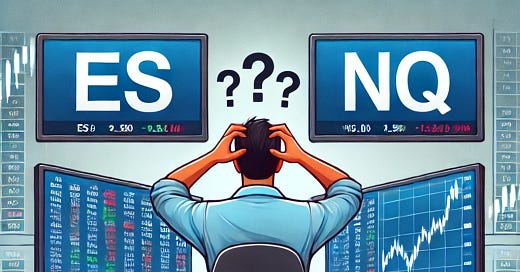Hello Traders!
Today we are going to cover a topic that comes up for every traders who actively trades the indices futures. For many futures traders, the choice between trading the E-mini S&P 500 (ES) and the E-mini Nasdaq 100 (NQ) comes down to more than just preference. These two popular futures contracts may look similar at first glance, but in realit…
Keep reading with a 7-day free trial
Subscribe to Conquer the Markets Trading Plan to keep reading this post and get 7 days of free access to the full post archives.




